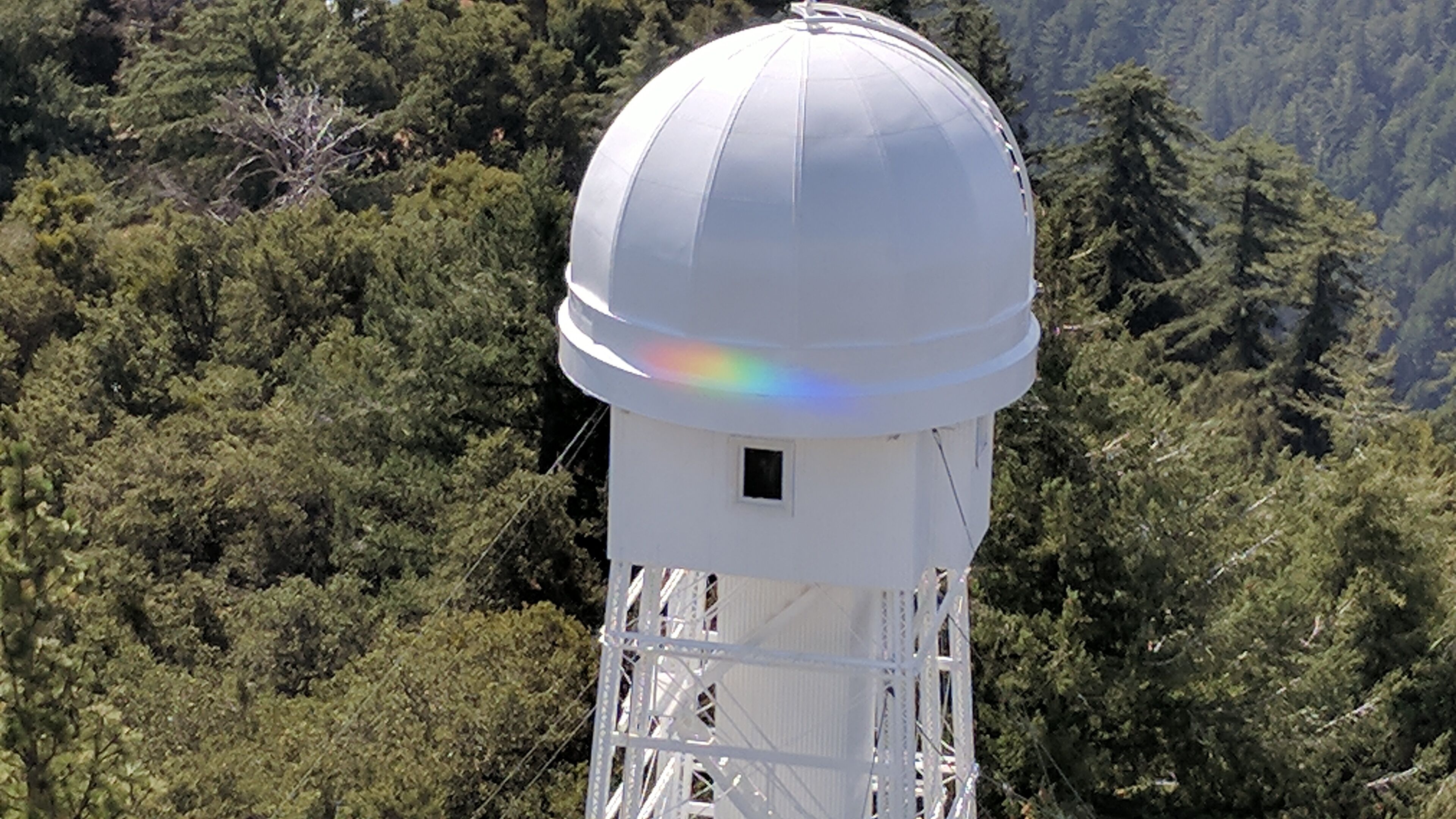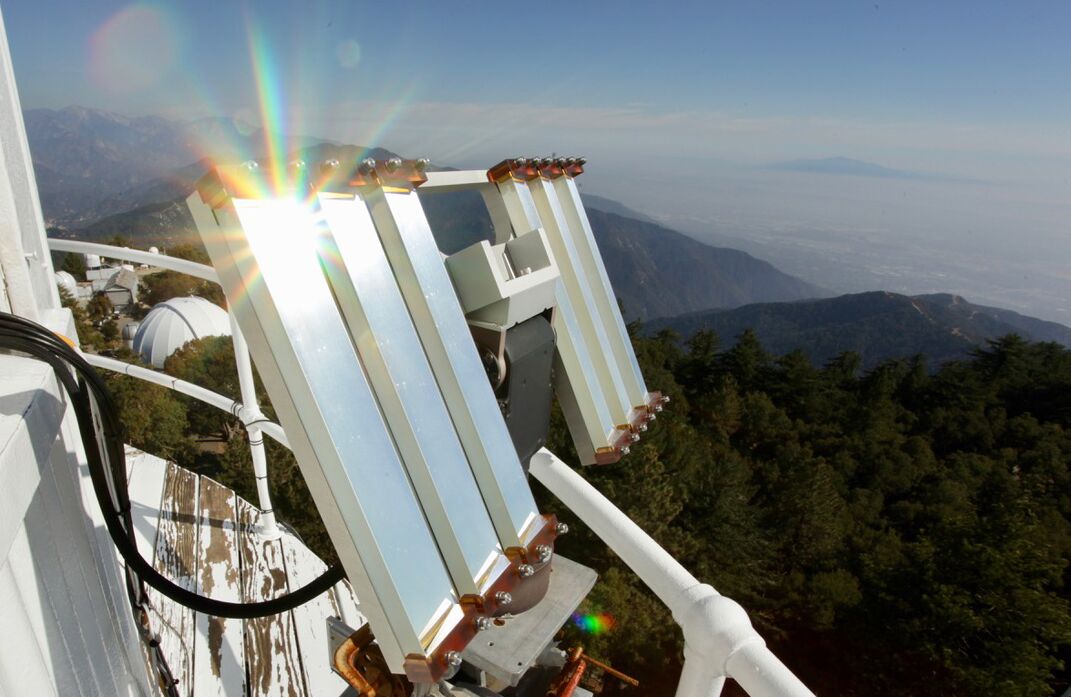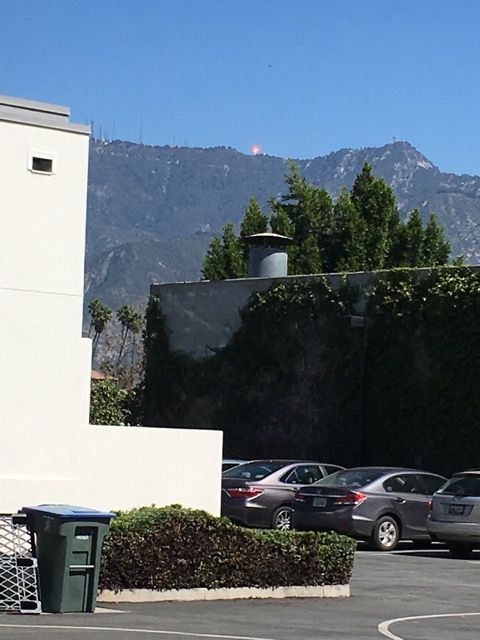Bask in Your Own Beam, Direct From Mt. Wilson
Here's a bright spot, literally, during our #StayatHome time: You can make a request for the brilliant prism reflected by Sunstar, an art installation atop Mt. Wilson Observatory's 150-foot Solar Tower Telescope, to be pointed directly at where you live.
What is Sunstar exactly?
"An array of six prisms, Sunstar takes incoming sunlight and refracts it, bending the light and spreading it into a spectrum–all the colors of the rainbow," is the fanciful, but totally scientific, explanation.
The installation, an "art/science collaboration of Liliane Lijn and astrophysicist John Vallerga," has been located at Mt. Wilson since 2018, and regularly shines at places like The Huntington and Griffith Observatory.
"Why are we doing this?" asks the team behind Mt. Wilson Observatory. "For the wonder of it, the pure delight at seeing brilliant spectral colors derived directly from the Sun, the source of light that gives us life."
There is an easy way to ask for the bright dot of mountaintop light to point, at least for a few minutes, in your direction: By sending a request to concerts@mtwilson.edu, with your latitude, longitude, and elevation (if you don't know those, you can email your full address).
The cost? It's free.
Important to keep in mind? You need to be able to see Mt. Wilson from your home prior to requesting. If your view of the observatory is blocked, by a hill or building or something else, you won't be able to see Sunstar.
Also? Cloudy days are a no-go, and Sunstar doesn't shine at night, as its name strongly suggests.
The path of the sun overhead is important here, too. If you live west-ish, say, around Santa Monica, your pinpoint of light will come later in the day. Are you closer to Pomona? Sunstar will shine for you in the morning.
Depending upon where you live, you'll see a pinpoint of brilliance shining atop Mt. Wilson. Walk a bit in either direction, and you'll see various colors cast "by a single wave of sunlight."
But, of course, this is a #StayatHome treat, one we can enjoy, if we can see the historic observatory, from our yard, our balcony, or window. Call it a bit of art-meets-science splendor, some prismatic sunlight to brighten up these challenging times.











